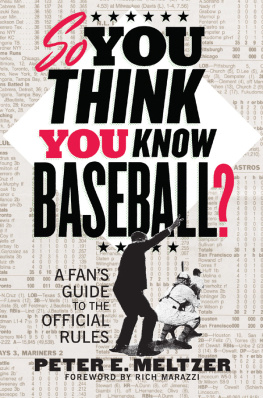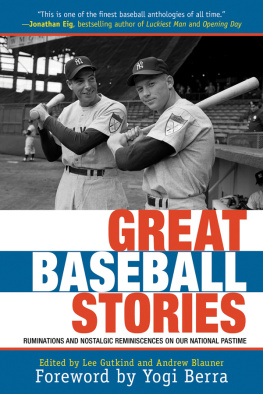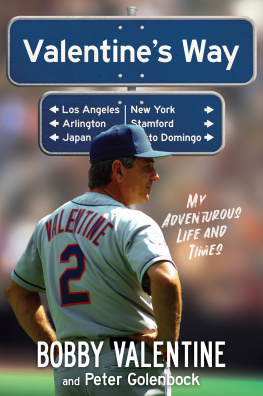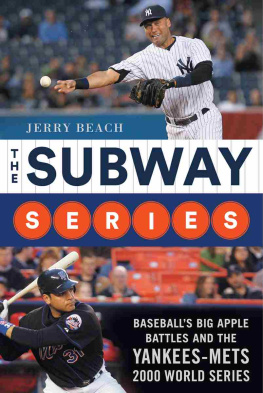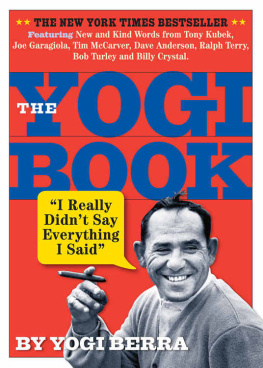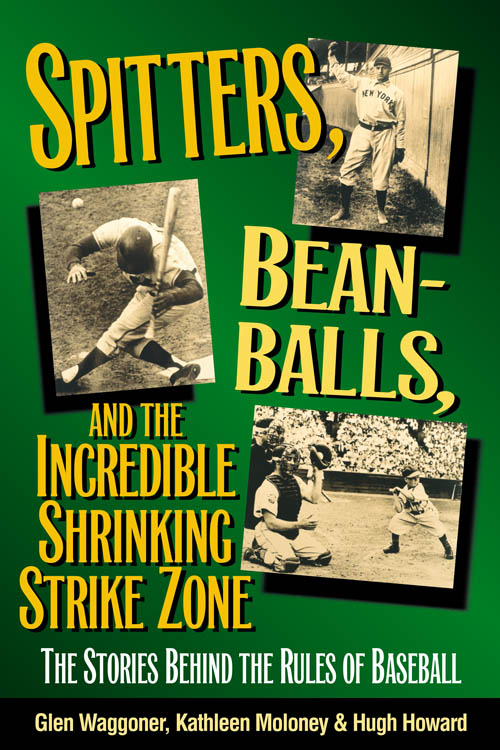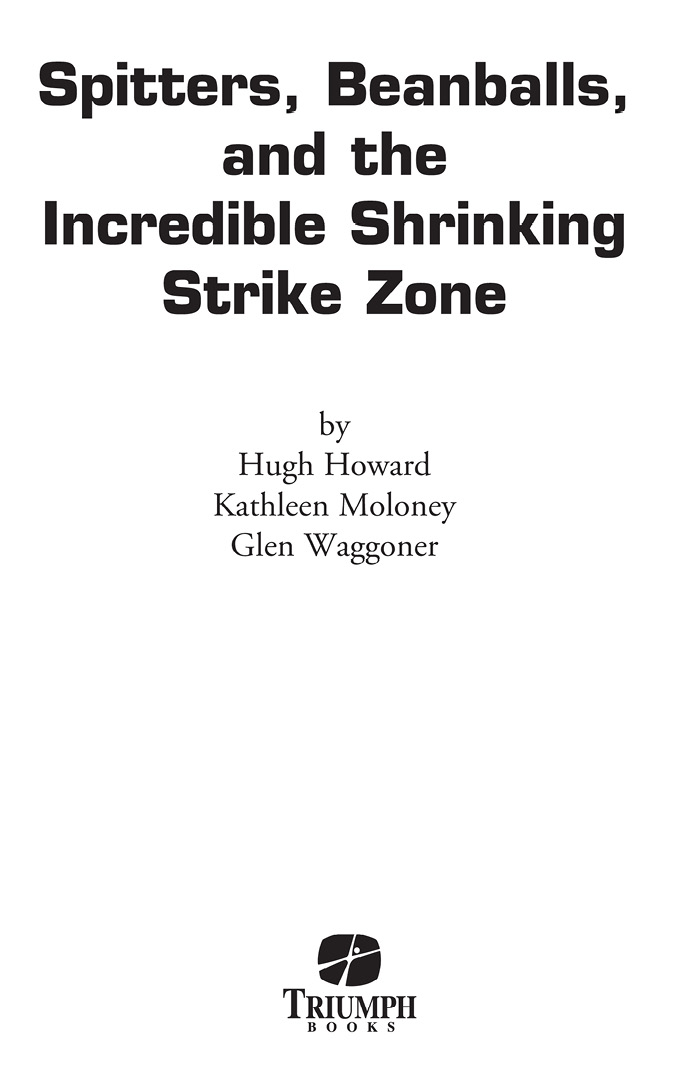
CONTENTS
Acknowledgements
Our thanks go to Mitchell Rogatz, president and publisher of Triumph Books, for launching this venture once again, and to Heidi Hill, editor at Triumph, for helping to reassemble the pieces.
For their research guidance, we would like to express our appreciation to Timothy J. Wiles, Bill Francis, Frank Vito, Amy Essington, and Keri Elberson at the National Baseball Library and Archive. On past visits, others at the National Baseball Hall of Fame Library assisted us in our research, including Tom Heitz, Bill Dean, Joe Fetterman, Pat Kelly, Betty McCarthy, and Jon Blomquist. We also thank Lloyd Johnson of the Society of American Baseball Research.
Thanks, too, go to Sharon McIntosh, Betsy Lawrence, and, in particular, Dominick Abel, our literary agent, for helping to put this book back into play.
Preface
T he volume you hold in your hands is actually the third edition of Spitters, Beanballs, and the Incredible Shrinking Strike Zone . The first edition was published in 1987, while a second, updated edition appeared in 1990; both were published under the title Baseball by the Rules . This revised edition reflects rule changes and events up through much of the 1999 baseball season.
Why three editions? The rules havent changed all that much. Perhaps the need for this book is expressed better by events, so well let a couple of actual occurrences speak for themselves.
In 1998, postseason play was barely underway when lots of folks found themselves referring to their rule books. Among them was Chuck Knoblauch, the Yankees second baseman, who chose a particularly bad time to debate the finer points of Rule 7.09k.
The circumstances were as follows. Game 2 of the American League Championship Series had gone into extra innings. The Yankees and Indians were tied 11 in the twelfth. With Indian Enrique Wilson on second, the batter laid down a sacrifice bunt and the Yankee pitcher fielded the ball. Knoblauch hustled over from his second-base position (so far, so good) to cover first. The throw never reached him, however, as it struck the runner on the back.
Knoblauch immediately made the call: he adjudged the runner to have been out of the base line and thus, he indicated to the umpire, the runner was obviously out. Unfortunately for the Yankees, Knoblauch forgot all about Rule 5.02, which says that the ball is alive until an umpire calls time. While Knoblauch was fervently making his case to the umpire, the ball rolled away from him. Meanwhile, Wilson raced around the bases and scored the winning run.
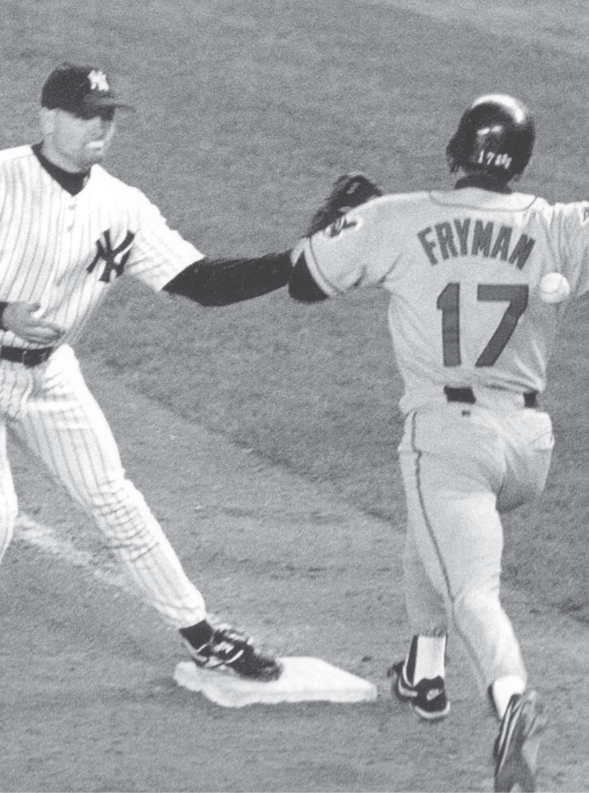
The ball, thrown by Yankees pitcher Tino Martinez, is about to hit Cleveland Indians base runner Travis Fryman. That much is obvious. What you dont see is that the Yankees Chuck Knoblauch, covering on the play, is about to lose his cool and, worse yet, the game. The whole story is told in the Preface. (AP/Wide World Photos)
The Book doesnt play such an obvious and dramatic role in every game, but a knowledge of its intricacies is essential for the games participants and a pleasure for those of us in the stands. Didnt most people have an opinion about that drive Mark McGwire stroked in Milwaukee for what would have been his sixty-sixth homer if it hadnt been ruled a ground-rule double? Or about Roberto Alomars spitting incident? Or whether the tar on George Bretts bat should have negated his homer?
Youll find those stories here, as well as many others, new and old, that offer a sense of the game that is wonderfully alive today, yet steeped in the past. Baseball is a game that rewards attention to detail. Its fans are absorbed by box scores and such minutiae as lineup cards, double switches, ERAs, and the rest. The niche in the marketplace that this book has found attests to the intensity and diligence of baseball fans. They want to understand the nuances, and this book seeks to help them accomplish that.
At the time of its initial publication, Baseball by the Rules was described as doing for the Official Rules of Baseball what being at the ballpark does for hot dogs. We hope that it still does. So lets play ball!
G. W., K. M., and H. H.
Note to the Reader
S pitters, Beanballs, and the Incredible Shrinking Strike Zone and the Official Rules of Baseball are not one and the same book. Official Rules of Baseball (which, for convenience, we have referred to in these pages as The Book) is issued by the Commissioner of Baseball. It is a legalistic document, full of the dos and donts of the game of baseball. It isnt rich in character or indicative of the history and fun of baseball.
Spitters, Beanballs, and the Incredible Shrinking Strike Zone is intended to explicate The Book, to take each of the dry-as-toast rules and illuminate them with real-life stories. In short, Spitters, Beanballs, and the Incredible Shrinking Strike Zone is intended to do for the Official Rules of Baseball what being at the ballpark does for hot dogs.
In these pages weve tried to put the rules into the context of the game and to show how they work in real-life situations. And because we think that a knowledge of the evolution of the game enhances an understanding of it, weve included rule-change chronologies at the close of most chapters. At the end of the book theres also a compendious listing of all the major league rule changes in chronological order.
The organization of Spitters, Beanballs, and the Incredible Shrinking Strike Zone is the same as that of The Bookten chaptersbut within each chapter we have taken some small liberties with the organization in order to make this book more readable. There is a fair amount of repetition in The Book, particularly in Chapters 3, 4, and 5, and weve tried to keep it to a minimum while maintaining the substance of all the rules. Weve also taken a few liberties with spelling; when The Book and Webster dont agree, we went with Webster.
When a rule is quoted or summarized, we cite The Books rule number in The Book; this should make it easier if you decide to take a look at The Book yourselfsomething we strongly suggest. (Copies of the Official Rules of Baseball can be purchased in bookstores, most sporting goods stores, or from Triumph Books directly, for $9.95. The O fficial Rules of Baseball we used was the most recent version available when this volume went to press, the 1999 edition.)
Introduction
The Rules of the Game
T he hitter swung from his heels. He made contact with the ball, but it dribbled along the first base line in foul territory. Undaunted, the batter hustled toward first.
The catcher took off after the ball as if possessed. When he caught up with it, he cocked his arm to throw it to the first baseman, but then he reconsidered. He moved menacingly toward the base runner.
The runner commenced to take evasive action. He took a stride toward second and leaped back. Then he zigzagged in the general direction of first, moving in and out of the base line.
The catcher still made no attempt to throw to first base, which wasnt really a base at all but a wooden stake about four feet high. He instead ran straight for the base runner. When he got about six feet away from him, the catcher took aim, fired the ball, and hit the runner square on the backside. The player was out.
Youre confused, right? Whats all this about running on a foul ball? Since when is a runner allowed to leave the base line? And isnt it illegal to throw at a runner, let alone hit him? What happens in a situation like this?


